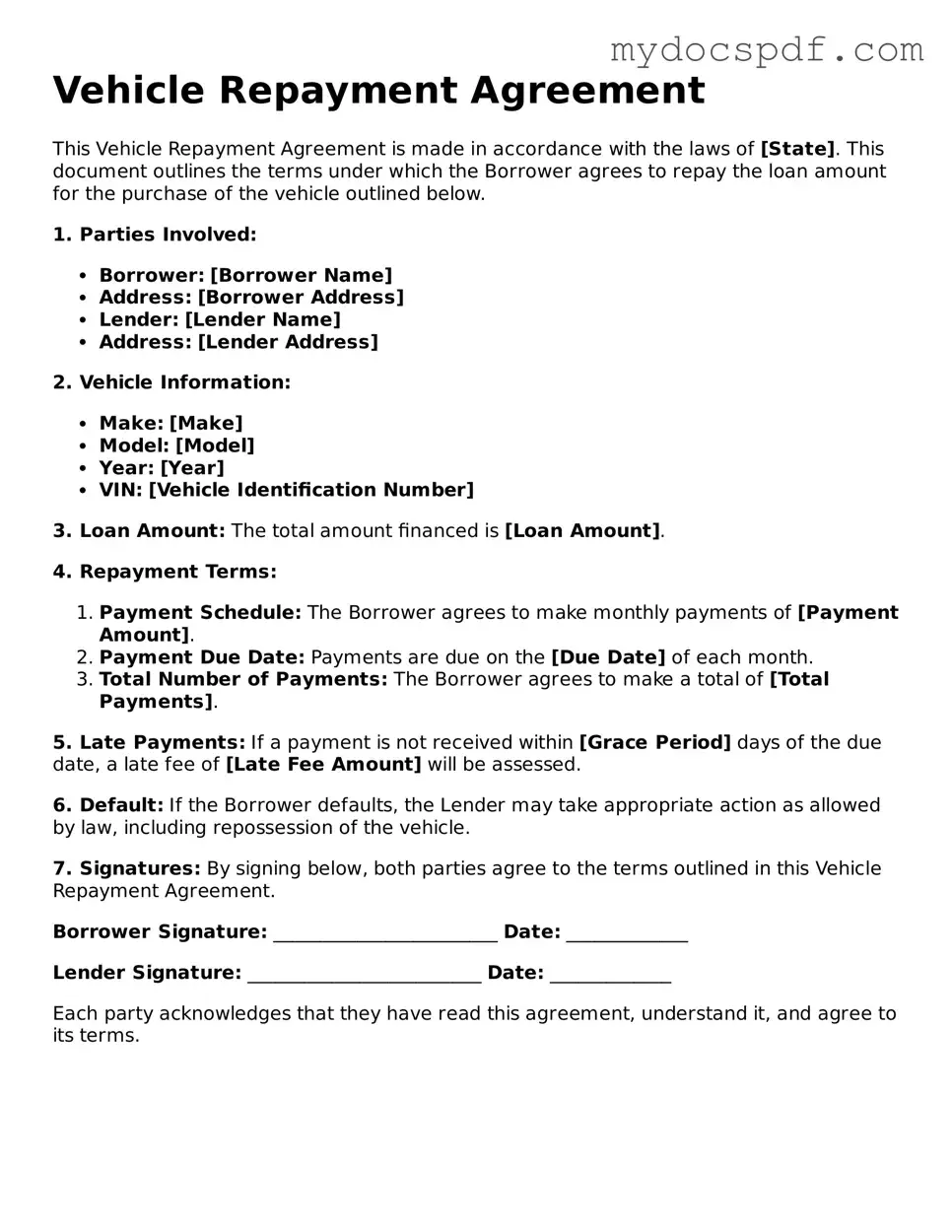Vehicle Repayment Agreement
This Vehicle Repayment Agreement is made in accordance with the laws of [State]. This document outlines the terms under which the Borrower agrees to repay the loan amount for the purchase of the vehicle outlined below.
1. Parties Involved:
- Borrower: [Borrower Name]
- Address: [Borrower Address]
- Lender: [Lender Name]
- Address: [Lender Address]
2. Vehicle Information:
- Make: [Make]
- Model: [Model]
- Year: [Year]
- VIN: [Vehicle Identification Number]
3. Loan Amount: The total amount financed is [Loan Amount].
4. Repayment Terms:
- Payment Schedule: The Borrower agrees to make monthly payments of [Payment Amount].
- Payment Due Date: Payments are due on the [Due Date] of each month.
- Total Number of Payments: The Borrower agrees to make a total of [Total Payments].
5. Late Payments: If a payment is not received within [Grace Period] days of the due date, a late fee of [Late Fee Amount] will be assessed.
6. Default: If the Borrower defaults, the Lender may take appropriate action as allowed by law, including repossession of the vehicle.
7. Signatures: By signing below, both parties agree to the terms outlined in this Vehicle Repayment Agreement.
Borrower Signature: ________________________ Date: _____________
Lender Signature: _________________________ Date: _____________
Each party acknowledges that they have read this agreement, understand it, and agree to its terms.
